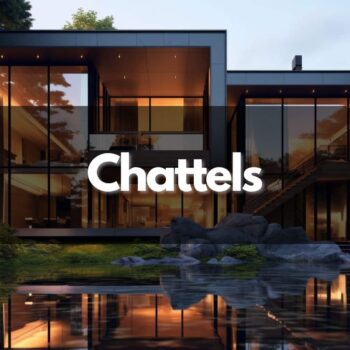A shared appreciation mortgage, or SAM, helps the buyer purchase unaffordable homes at low-interest rates. With these mortgages, the lenders assist the borrowers so that they can purchase homes easily. However, the lenders also demand something in exchange, which is why these are called shared appreciation mortgages. In this post, we’ll discuss the shared appreciation mortgages in detail and use examples to make the concept easier.
A shared appreciation mortgage is a home loan in which the lender shares a percentage of the home’s appreciated (increased) value with the home buyer. The phrase ‘shared appreciation’ means a share in the appreciated value of the property. The lender offers these mortgages at a lower rate than the market value, but in exchange, they request a percentage of the increase in value of the property when it is sold.
With a conventional mortgage, the home buyer pays the principal and interest during a pre-agreed loan term. When the borrower sells this property, they get all the share of the property’s increase in value because it’s a conventional mortgage.
On the other hand, the home buyer doesn’t get all of the appreciated value of their home because they have agreed to provide a portion of the appreciated value to the lender. Thus, the borrower has to pay the percentage of the amount by which the value of their home has increased to the lender.
A phased-out shared appreciation clause states that the lender will get the percentage of shared appreciation only if the home buyer sells it within the first few years. The deferred principal on the statement refers to the portion of the initial loan covered by the shared appreciation clause. For instance, if the shared appreciation is 25%, the lender will get the 25% of the share only if the buyer sells the home within five years of adjustment. If the borrower is wise and can hold the property for longer, they will wait more than five years to sell the property. This way, the borrower can save on the percentage of the shared appreciation that they’ll have to pay to the lender otherwise.
In a shared appreciation mortgage, the lender shares a percentage of the appreciation value. The lender will receive a certain percentage of the increase (appreciation) in the property’s value. On the other hand, a shared equity mortgage is one in which the lender owns a part of the home. The lender can make the down payment on behalf of the homebuyer or make any other investment, such as a portion of the total price purchase or closing costs. The following table explains the main differences between these two mortgages:
| Shared Appreciation Mortgages | Shared Equity Mortgages | |
| Lender’s share | Percentage of increase in value of the home upon sale | Part of the property |
| Buyer’s benefits | Reduced interest rates | Reduced down payment or closing costs |
| Decrease in Property’s Value | The lender will share the loss | The lender or equity partner will get their part of the property regardless of profit or loss. |
A shared equity mortgage can lower the interest rates and monthly payments and make it more affordable for you to get a loan. So, these mortgages are beneficial if the borrower struggles to get a mortgage or can’t afford high monthly payments. Besides this, the borrower also benefits from the increase in the home’s value. If the property’s value increases, the borrower will get the profit. However, if the property’s value doesn’t increase, the borrower can sell it, and in this case, since there is no increase in value, they don’t have to pay the percentage share of the lender either.
The biggest drawback of a shared appreciation mortgage is that the borrower can’t keep all the profit after selling the property. Since the borrower has already enjoyed lower monthly payments on the mortgage, they have to pay the percentage of the increase in the property’s value. Thus, the home’s appreciated value is shared between the lender and the borrower. Sometime’s, the lender can even have up to 50% of the share in the appreciated value. Lastly, shared appreciation mortgages are difficult to find as not all lenders offer them.
Example 1: Suppose Dan purchased a property for $250,000. His credit score isn’t good, and he can’t afford high monthly payments. A lender offers him a mortgage at lower than market interest rates, making it easier for him to qualify for the loan. However, the lender asks for a share in the appreciation of the home value in exchange. Dan paid $20,000 as a down payment to the lender. His mortgage is $230,000, and the lender agrees to take a 30% shared appreciation. Five years later, the property’s value has doubled and reached $500,000. Now Dan has decided to sell the home. He has to pay 20% of the home’s appreciated value.
- Appreciated value of the home: $500,000 – $250,000 = $250,000
- Percentage of shared appreciation: 20% of $250,000 = $50,000
- Dan gets: $450,000
Dan has to pay $50,000 to the lender after selling the property, and he gets $450,000. This was a profitable decision for Dan as initially, he couldn’t afford high monthly payments, and the Shared Appreciation Mortgage helped him qualify. The lender got a percentage of the shared appreciation in return, and Dan gets the remaining amount as profit. However, Dan still has to pay the remaining mortgage as a lump sum to the lender.
Note: The lender always gets the remaining mortgage amount plus their share in the home’s appreciated value.
Example 2: Suppose Lina has to purchase a property, and she has decided to get a shared appreciation mortgage. She can’t get any other mortgage as the rates are too high, and she can’t make high monthly payments either. However, she is concerned about the share that the lender will get if the home value appreciates and she had to sell it. The loan statement also includes a ‘phase out’ clause, which states that the shared appreciation mortgage will completely phase out if Lina sold the property after five years. The following is the breakdown of this mortgage:
- Mortgage amount: 180,000
- Term: 20 years
- Interest rate: 4%
- % of lender’s share in appreciated value: 20%
- Phase-out clause: 5 years
- Monthly payments: $1,332.52
- Total cost of the loan at closing: $306,170.15
Four years later, Lina had to move somewhere else and decided to sell the house. The value of the home has increased by $20,000. Since the phase-out clause states that the percentage share will be reduced to zero after five years, Lina still has to pay the lender’s share. However, since the home has appreciated only by $20,000, the lender gets $4,000. This way, the lender also loses the future interest payments and gets the share in appreciated value only.
In this situation, the lender would have benefited if Lina had repaid the loan completely. Besides that, Lina didn’t benefit from this situation either, as the home value didn’t increase a lot, and she has to pay the remaining mortgage balance too.
Frequently Asked Questions
Most lenders evaluate the credit score, loan-to-value ratio, income stability, and overall market conditions when offering a loan. However, with a shared appreciation mortgage, even borrowers with a bad credit score can qualify for a loan at lower rates. Mostly, people with bad credit scores get loans with very high rates, but these mortgages are a good option for lowering the monthly payments.
Shared appreciation mortgages are not very common in the U.S. Most home buyers prefer FHA and adjustable-rate mortgages that offer lower down payments and rates. Sometimes these loans are offered directly by the government, and sometimes they are available through private lenders in partnership with government agencies. These types of mortgages require more paperwork because of the additional clauses.
One of the main reasons a lender would give a shared appreciation mortgage is the profit they expect to receive from the property sale. A lender will benefit from this mortgage if the price of the property increases. There is also a chance that the lender inserts a shared appreciation clause into the loan statement without informing the borrower. Thus, checking the loan commitment carefully before agreeing is essential.
Home buyers mostly benefit from the appreciated value of their homes over the years. However, everything comes with a cost. Many homebuyers can’t afford high monthly payments, but they wish to live in a large home and have a good quality of life. In exchange for lower interest rates and monthly payments, some home buyers agree to offer a portion of their home’s appreciated value to the lender. If borrowers can afford monthly payments, they will never choose a shared appreciation mortgage and get all of their home’s appreciated value at sale.
A shared appreciation mortgage is a good option for house flippers and real estate investors. Flippers are those real estate people that purchase a property or renovate it only to sell it at a higher price to gain profit. Shared appreciation mortgages can be useful for flippers if the real estate market is rising. Sometimes shared appreciation mortgages are also used when the home is underwater. An underwater mortgage occurs when the housing market has declined, and the value of the house decreases. In this case, the lenders might offer a shared appreciation mortgage to reduce the mortgage and match the lower value of the home according to the market.
What to Know for the Real Estate Exam
A shared appreciation mortgage provides a percentage of the home’s increase in value over the years to the lender in return for a lower interest rate. The buyer benefits from the lower interest rate and qualifies for the loan, while the lender gets profit when the home is sold at a higher value than when it was purchased. While most lenders can get a 25% increase in property value, some can get up to 50% of the shared appreciation depending on the purchase price and other factors. A lender in a shared appreciation mortgage also shares the loss if the property’s value decreases. These mortgages are not readily available in the U.S., but lenders can offer them by modifying traditional mortgages. Review more mortgage and finance terms.











